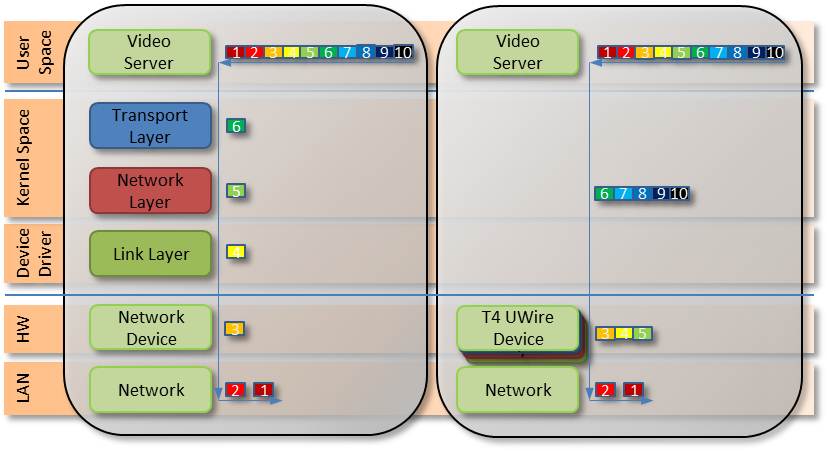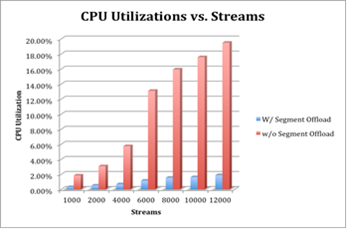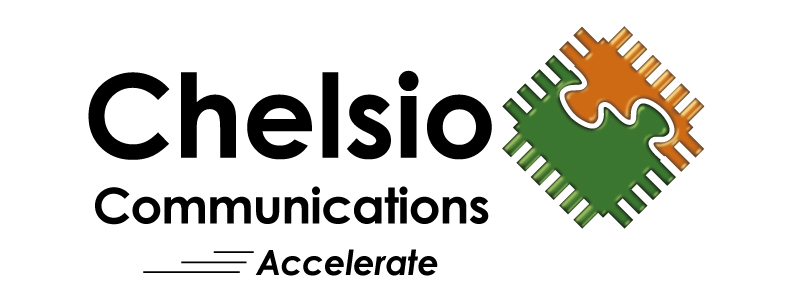The Chelsio StreamEngine (CSE) adds video segmentation offload and per-stream rate shaping functionality to the TCP and UDP offload capabilities of the T4 Unified Wire adapters. This significantly reduces CPU utilization and increases video and content delivery capacity, enabling best-in-class performance for Content Delivery Networks (CDN), IPTV and Video on Demand providers.
Video Segmentation Offload
Tailored for video content, the StreamEngine Video Segmentation Offload (VSO) technology moves the processing required to packetize video data and rate control its transmission from software running on the host to the network adapter. VSO increases performance and dramatically reduces CPU overhead, allowing significantly higher capacity using the same server hardware. Without VSO support, video server software running on the host needs to packetize payload into frames, process each frame individually through the network stack and schedule individual frame transmission, resulting in millions of system calls, and packet traversals through all protocol layers in the operating system to the network device. In contrast, StreamEngine implements the network protocol stack in the T4 adapter, and the host server software simply hands off unprocessed video payload in large I/O buffers to the adapter.
The following figure compares the traditional datapath on the left to the StreamEngine datapath on the right, showing how per-frame processing is eliminated. In this example, the video server pushes five frames at a time. In an actual implementation, a video server pushes 50 frames or more in each I/O, drastically lowering the CPU cycles required to deliver the content.

Rate Shaping
Rate shaping or limiting is beneficial for several reasons, one example is for Content Delivery Networks (CDNs)/Video On Demand (VOD) providers to avoid receive buffer overflows, smooth out network traffic, or to enforce Service Level Agreements (SLAs). Without dedicated hardware based rate limiting support, the video server must perform rate limiting in software, which is a CPU intensive task and can be prohibitive at 10Gb and higher rates.
StreamEngine implements per video stream rate limiting in the T4 adapter thereby offloading the traffic shaping that would normally be done by software running on the server. As a result, host CPU utilization and network transmission jitter are drastically reduced.
StreamEngine supports up to 16 unique shaping rates or traffic classes per channel (port), and an arbitrary number of video streams can be assigned to each class. In conjunction with Video Segmentation Offload, the video server software can push large amounts of payload to the StreamEngine at a time, which then segments and schedules the transmission of the resulting frames onto the network as specified by the associated Traffic Class. The result is tremendous improvements in system efficiency, as show in the figure below.

Chelsio’s StreamEngine technology, a combination of hardware, firmware and software components, offloads the CPU intensive tasks from the server to the Chelsio Unified Wire Adapter, freeing up CPU cycles, and allowing the server to be equipped with less expensive, lower power CPUs, and significantly increases the capacity of the content delivery server.
